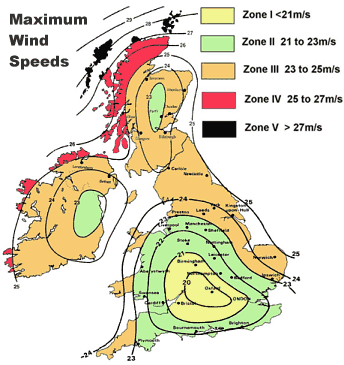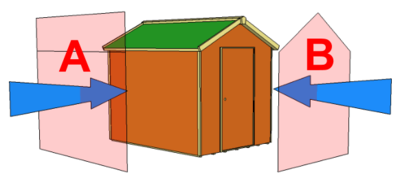Wind Load: Difference between revisions
From DT Online
(Created article) |
mNo edit summary |
||
| Line 1: | Line 1: | ||
Buildings, trees, flagpoles and signs etc. are all subjected to [https://en.wikipedia.org/wiki/Force '''Forces'''] acting as a result of the wind blowing against them. [https://en.wikipedia.org/wiki/Wind_engineering '''Wind Engineering'''] to calculate the size of these [https://en.wikipedia.org/wiki/Force '''Forces'''] can be complex, as a result of taking into account the shape and orientation of the building, the materials it is made from and variations in [https://en.wikipedia.org/wiki/Wind_speed '''Wind Speed'''] as a result of location and height for example ''(ref: [http://shop.bsigroup.com/ProductDetail/?pid= | Buildings, trees, flagpoles and signs etc. are all subjected to [https://en.wikipedia.org/wiki/Force '''Forces'''] acting as a result of the wind blowing against them. [https://en.wikipedia.org/wiki/Wind_engineering '''Wind Engineering'''] to calculate the size of these [https://en.wikipedia.org/wiki/Force '''Forces'''] can be complex, as a result of taking into account the shape and orientation of the building, the materials it is made from and variations in [https://en.wikipedia.org/wiki/Wind_speed '''Wind Speed'''] as a result of location and height for example ''(ref: [http://shop.bsigroup.com/ProductDetail/?pid=000000000030206733 '''BS 6399-2:1997 Loading for buildings. Code of practice for wind loads''']). | ||
Revision as of 07:42, 29 October 2016
Buildings, trees, flagpoles and signs etc. are all subjected to Forces acting as a result of the wind blowing against them. Wind Engineering to calculate the size of these Forces can be complex, as a result of taking into account the shape and orientation of the building, the materials it is made from and variations in Wind Speed as a result of location and height for example (ref: BS 6399-2:1997 Loading for buildings. Code of practice for wind loads).
An estimate of Wind Force or the Pressure exerted by the wind, adequate for Design and Technology projects, can be made more easily by disregarding many of the modifying variables as follows:
Pressure = ½ x (Density of Air) x (Wind Speed)2 x (Shape Factor)
- The Density of Air can be taken to be about 1.25 kg/m3.
- The shape factor (or Drag Coefficient) has no units and is dependent upon the shape, size, and roughness of an object but can be assumed to be 1 initially (i.e. for small, smooth, rounded objects less and large, rough faced, flat objects more).
- The wind speed must be expressed in metres per second (m/s) and can be obtained from measurement or looked up in tables or on charts as shown (a more thorough analysis would also take into account modifiers such as altitude, temperature, terrain, gusts and site conditions for example)
- Wind Pressure has units of Newtons per square metre (N/m2).
The Wind Loading for a particular object can be estimated as:
Wind Loading = Wind Pressure (N/m2) x Projected Area(m2)
- The Projected Area is the surface area as seen from the direction of the wind (i.e. imagine as an Elevation from the wind's point of view - for a sloping roof this would be its ridge height x width and for a cylindrical mast its diameter x height).
- More thorough analyses would also take into account modifiers such as the Aspect Ratio of the object and may include an Importance Factor (i.e. how critical would a failure or collapse be).
- The Wind Loading is given in Newtons.
Note: When designing Roof Trusses for example, The Wind Load can be combined with the Dead Load and a Resultant obtained using a Parallelogram of Forces

